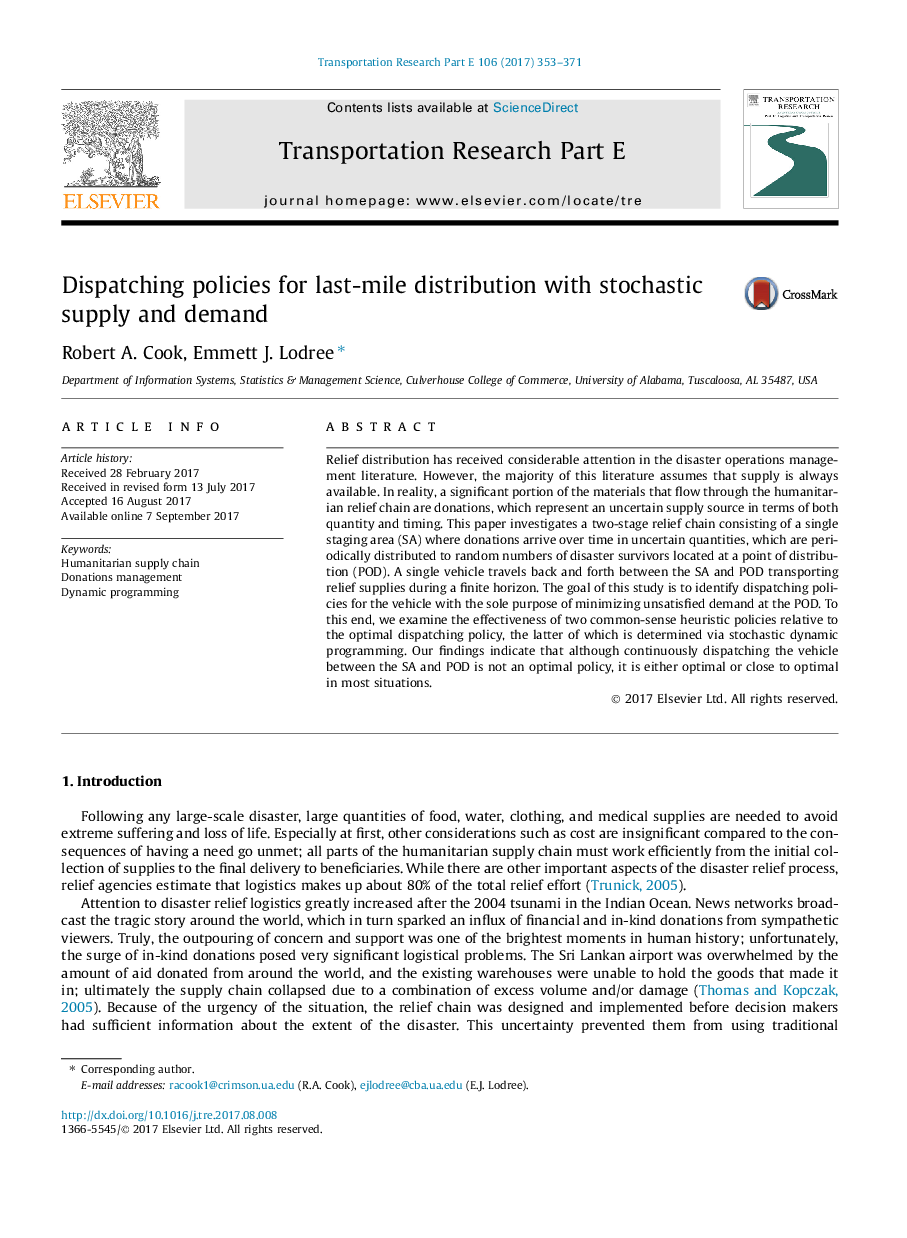| Article ID | Journal | Published Year | Pages | File Type |
|---|---|---|---|---|
| 5110411 | Transportation Research Part E: Logistics and Transportation Review | 2017 | 19 Pages |
Abstract
Relief distribution has received considerable attention in the disaster operations management literature. However, the majority of this literature assumes that supply is always available. In reality, a significant portion of the materials that flow through the humanitarian relief chain are donations, which represent an uncertain supply source in terms of both quantity and timing. This paper investigates a two-stage relief chain consisting of a single staging area (SA) where donations arrive over time in uncertain quantities, which are periodically distributed to random numbers of disaster survivors located at a point of distribution (POD). A single vehicle travels back and forth between the SA and POD transporting relief supplies during a finite horizon. The goal of this study is to identify dispatching policies for the vehicle with the sole purpose of minimizing unsatisfied demand at the POD. To this end, we examine the effectiveness of two common-sense heuristic policies relative to the optimal dispatching policy, the latter of which is determined via stochastic dynamic programming. Our findings indicate that although continuously dispatching the vehicle between the SA and POD is not an optimal policy, it is either optimal or close to optimal in most situations.
Related Topics
Social Sciences and Humanities
Business, Management and Accounting
Business and International Management
Authors
Robert A. Cook, Emmett J. Lodree,
